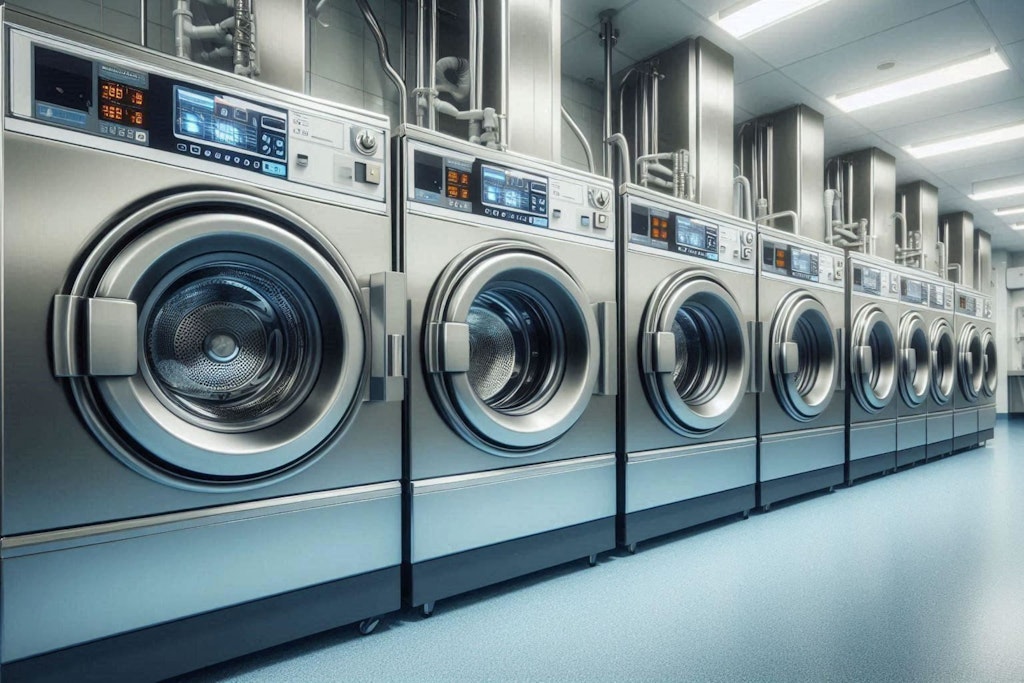Why the right equipment matters for infection prevention and control
Last updated on 3 September 2024

Infection prevention and control is crucial within residential aged care so that residents – and staff – are better protected from transmitting infectious diseases. Effective infection control measures are essential safeguards and your laundry hygiene standards play a major role.
Laundries are a well-traversed thoroughfare for sheets, towels, pillowcases, blankets, clothing and uniforms. Suppose any of this linen has been exposed to influenza, coronavirus, gastroenteritis or other infectious organisms. Then there is always the risk that improper cleaning methods will leave traces, helping it spread.
That’s the last thing anyone wants in a setting where the vast majority of people are older and more susceptible to illness and having that illness progress quickly due to weakened immune systems.
Keeping your processes compliant
Aged care facilities are subject to stringent regulations and standards regarding infection control. Adhering to these regulations not only ensures the safety of residents but also helps facilities avoid legal and financial repercussions associated with non-compliance.
The Australian Guidelines for the Prevention and Control of Infection in Healthcare state that: “Healthcare facilities must have documented policies on the collection, transport and storage of linen. Healthcare facilities that process or launder linen must have documented operating policies consistent with Standard AS/NZS 4146:2000.”
“All used linen should be handled with care to avoid dispersal of microorganisms into the environment and to avoid contact with staff clothing.”
Importantly, it highlights that domestic-type washing machines must only be used for a patient’s personal items, not other linen, reinforcing the need for a comprehensive laundry set-up with industrial washers and dryers.
Infection prevention and control will also prominently feature under the strengthened Aged Care Quality Standards. Currently, it is a requirement of Standard 3 (Personal care and clinical care), but it will shift to Standard 4: The Environment with a dedicated outcome once the new Standards are implemented in 2025.
Additionally, the physical handling element of linen must adhere to the correct methods, including:
- Appropriate personal protective equipment is worn during the handling of soiled linen to prevent exposure to blood and body substances
- Used linen is ‘bagged’ at the location of use into an appropriate laundry receptacle
- Used linen must not be rinsed or sorted in patient-care areas or washed in domestic washing machines
- Linen soiled with body substances should be placed into leak-proof laundry bags for safe transport
- Hand hygiene is performed following the handling of used linen
These procedures should all be embedded into everyday processes within an aged care setting. Also, staff should be educated on the importance of best infection prevention and control practices so they remain vigilant of potential risk factors.
The role washing machines play
Washing machines, when used correctly, are highly effective at eliminating pathogens from linen. Using hot water cycles and appropriate detergents helps to kill bacteria, viruses, and other microorganisms that can cause infections. Regularly washing linens, towels, and clothing ensures that these items do not become a source of contamination.
Research shows that 60°C is the minimum temperature required for effectively killing microorganisms in linen. Some, including Staphylococcus aureus, can survive 60°C, but none reportedly survive laundering at 75°C. The proper use of detergents and disinfection agents will also improve outcomes at lower temperatures.
Having quality equipment within your laundry is critical, too. After all, you can’t achieve the best outcome without the best equipment. Reliable washing machines with the functionality you require will help keep laundering processes dependable even when contagious outbreaks threaten.
Of course, you need to regularly inspect and maintain washing machines to ensure they are functioning correctly. Malfunctioning equipment, including damaged temperature controls, can lead to ineffective laundering and increased infection risks.
Conducting ongoing quality management assessments will ensure any faults are recorded and monitored while making sure preventative maintenance measures are in place. This is when something like a faulty timer control can be caught and fixed before it negatively impacts staff and residents by contributing to an outbreak of some sort.
Infection prevention and control are vital in aged care settings to protect residents and comply with regulations. Washing machines and clean linen play a significant role in these efforts by preventing cross-contamination and maintaining quality hygiene processes. By adhering to best practices in linen management through suitable washing machines, aged care providers can create a safer and healthier environment.
Visit Laundry Solutions or contact them at 1300 666 289 to see how they can help with your laundry operations, equipment management and infection prevention and control management.